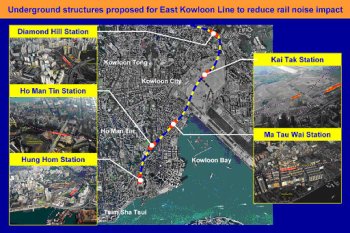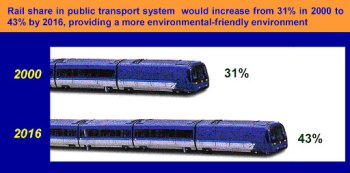| To ensure that SEA can make real contributions, it is important to determine environmental issues and mitigation measures of the preferred option(s) and major assumptions of the SEA study that require future audit and follow-up actions. To be organized, a strategic follow-up plan - Strategic Environmental Monitoring, Audit and Review (SEM&A) is required. Instead of just monitoring the environmental performance, the number one objective of a SEM&A programme is to audit if the assumptions behind the PPP are realistic and materialized or not. A complete implementation of a PPP together with all the associated policy assumptions is very rare in reality. Therefore, it is important to keep track of the actual implementation of the PPP and associated policy assumptions. Once a deviation is identified, appropriate remedial policy actions should be undertaken to ensure sustainability and long term environmental performance. SEM&A of course also ensures environmental issues arising from the PPP implementation are monitored/ tackled, the associated recommended mitigation measures are implemented as scheduled and in case deviation of assumptions arises, it would trigger a SEA review or further assessments to update the SEA information. SEM&A also allows recommendations of additional measures in view of current situations and provides the most updated information to the relevant on-going studies. EM&A include action plans setting out clearly that who, when, why and how to facilitate future follow-up actions under different scenarios. The plans are to translate the commitments made in SEA into concrete policies or actions and they normally contain the following items :
- Further studies on environmental acceptability and feasibility of PPPs required before implementations
- Timing and extents on the implementations of PPPs. This is particularly important for controversial actions, for example, restraining the growth or usage of vehicles in which prevailing circumstances and the public’s acceptance levels have to be considered.
- Design issues to be pursued during the development of the PPPs particularly strategic PPPs so as to minimize the resulting environmental impacts.
In sum, a EM&A system should include the following requirements:
- Checking of assumptions
- Monitoring the progress of measures recommended in SEA ensuring their implementation
- Defining additional measures if necessary based on updated information
- Allowing provision of feedbacks to higher levels, such as the Strategic Highway Project Review
- Ensuring reviews or further assessments be triggered if real situations significantly different from previous assumptions adopted
http://www.epd.gov.hk/epd/english/environmentinhk/eia_planning/sea/ebook1_8.html
In preparing the EM&A, a Government Inter-departmental Working Group was set up and working level meetings were convened so as to reach agreements on the objectives and scopes of the SEM&A works well before the commencement of the EM&A.
Under the EM&A system of the study, there was an annual review of the Composite Noise/Air scores providing an up-to-date account of the vehicle emission and noise conditions for the current years.
Meanwhile, there was an annual update taking into account the latest available projection figures on policy assumptions such as population, land use, social, economic and effects of various control measures etc. and thus updating the forecast on the Composite Air/Noise Scores. The results would be used to compare against the 1997 original projections conducted in the SEA so as to identify any trends of possible environmental degradations over time.
All the proposed mitigation measures including: i) Policy Initiatives (i.e. more extensive network of rail service; putting new roads underground); ii) Engineering Measures (i.e. more stringent vehicle emission standards; trolley buses; iii) Near or at source measures (i.e. more extensive use of low noise surface; retrofitting of noise barriers to existing roads) and iv) Management possibilities (i.e. traffic management or speed regulations) were also monitored under the EM&A programme and the status of the implementation were reported to the Inter-departmental Working Group. The process ultimately identified 5 suitable sites in Hong Kong for further detailed feasibility study with key environmental implications, potential problems, the pros and cons of different options transparently presented to the stakeholders.
Key Points of the SEM&A
Review of Input Assumptions
- Assumptions updated based on the best available information
- Consistent with the Strategic Highway Project Review
Findings
- Major assumption (e.g. GDP, vehicle fleet size, cross-boundary vehicle traffic) are lower than the Medium Growth Scenario under CTS3
- Vehicle-km-travelled also lower than the Medium Growth Scenario
- Latest sets of emission factors
Monitoring of Recommended Mitigation Measures
- Report on each recommended measures
- Majority of the mitigation measures progressing well
Identification of new measures
- Reduction in no. of buses in Central Business District (CBD)
- Limiting the period of loading/unloading activities of goods vehicles at CBD to night time
- Park-and-Ride Facilities at newly designed rail stations (e.g. along West Rail)
- Comprehensive footbridge System in CBD (e.g. linking Central / Admiralty and Wan Chai)
http://www.epd.gov.hk/epd/english/environmentinhk/eia_planning/sea/ebook1_9.html
The EM&A system suggested some guiding principles for future reference and follow-up actions. Principles include provision of appropriate facilities at railway stations to facilitate railway usage, general environmental preference of the underground railway option, promotions of better integration of transport and land use planning to optimize environmental benefits and avoid adverse impacts etc.
Aspects to be monitored under the EM&A system include :
(click to enlarge)

(click to enlarge)

Figure 14 - Aspects to be monitored under the EM&A system of the Second Railway Development Study
http://www.epd.gov.hk/epd/english/environmentinhk/eia_planning/sea/waste_disposal_sites.html
The SEM&A recommended a list of strategic follow-up actions for the extensions and the new landfill site developments. Experiences have proved that with the SEM&A in place, the SEA can make real contributions instead of just being a paperwork left unattended. The major follow-up actions contained in the SEM&A include :
- To explore interface with complimentary waste management projects –
As the two projects progress, it is recommended to draw up a co-ordinated approach to maximize the strategic environmental benefits of utilizing the construction and demolition materials, thus reducing the needs on landfill;
- To maximize afteruse development opportunities during strategic planning of new marine based landfill sites -
Since the new marine based landfill sites proposed in the study are located at remote locations which might be suitable for the afteruse developments, opportunities on this aspect should be explored.
- To review waste management plans and refine projections of municipal solid waste arisings and construction and demolition materials arisings -
As predictions of materials arisings are based on a variety of assumptions subject to external influences, waste management plans should be reviewed and the projections should be refined to facilitate the planning and implementation of the landfill extensions and the development of new sites.
|

 Strategic Environmental Assessment (SEA) Knowledge Centre
Strategic Environmental Assessment (SEA) Knowledge Centre 